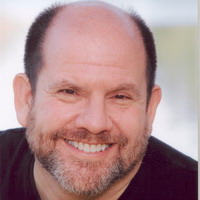
|
|
Stan Tatkin, PsyD, MFT, practices psychotherapy in Calabasas, California. Dr. Tatkin was a primary inpatient therapist at the John Bradshaw Center, was clinical director of Charter Hospital's intensive outpatient drug and alcohol program, and is a former president of the California Association of Marriage and Family Therapists, Ventura County chapter. Trained in developmental object relations, his private practice specialized in the treatment of adolescents and adults with personality disorders. His interests have since branched out toward psycho-neurobiological theories of human attachment, integrating principles of early mother-infant attachment with adult romantic relationships. He speaks to professional audiences on subjects of couples therapy and preventative psychotherapy through early intervention with infants, children and their parents. He has published several articles on the psychobiology of couples' therapy and is currently writing on couples interventions using attachment theory and principles of arousal and affect regulation. In addition to his private practice, he teaches and supervises first-year family medicine residents at Kaiser Permanente, Woodland Hills, through which he is an assistant professor at the UCLA David Geffen School of Medicine, Department of Family Medicine. He is also adjunct faculty for Antioch University, Santa Barbara Graduate Institute, and California Lutheran University. He serves as a consultant and supervisor to the staff and faculty of CALM, a child abuse center in Santa Barbara. Dr. Tatkin is a veteran member of Allan N. Schore's study group. He has trained in the Adult Attachment Interview through Mary Main and Erik Hesse's program out of University of California, Berkeley. He is a contributing editor on a book with Allan Schore for W.W. Norton & Company due out in Fall of 2006. Other Products by Stan Tatkin 1) The Four Puzzle Pieces: a psychobiological approach to couples therapy
To View Comments or Join the Conversation: |
Most Viewed of all Products
Getting Started with MiniQ and full QEEG brain mapping
|

